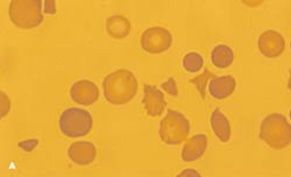- Clinical Technology
- Adult Immunization
- Hepatology
- Pediatric Immunization
- Screening
- Psychiatry
- Allergy
- Women's Health
- Cardiology
- Pediatrics
- Dermatology
- Endocrinology
- Pain Management
- Gastroenterology
- Infectious Disease
- Obesity Medicine
- Rheumatology
- Nephrology
- Neurology
- Pulmonology
E coli O157 Infections: 5 Things Primary Care Physicians Need to Know Now
1. The Escherichia coli O157 organism is a member of the enterohemorrhagic (EHEC) pathotype that causes bloody diarrhea, which can be associated with hemolytic uremic syndrome (HUS).
2. Most microbiology laboratories do not routinely test for this organism and, if they do, commonly use sorbitol MacConkey media, which is based on E coli O157’s inability to ferment sorbitol. Other EHEC will not be detected this way but can be detected by testing the diarrhea by PCR for the gene(s) that produce(s) the toxin linked to the disease (Shiga toxin).
3. The illness characteristically produces diarrhea with significant abdominal pain and little fever which, within a few days progresses to bloody diarrhea. It is important to know that it appears that the use of empiric antimicrobials-which are often given for bacterial gastroenteritis-increase the risk of HUS.
4. Although the classic vehicle for the pathogen is undercooked hamburger, a number of other foods have been linked to outbreaks. These include fresh produce, such as sprouts and lettuce, and unpasteurized milk and other dairy products that are contaminated by bovine (or some other livestock) excretion.
5. Treatment currently is supportive and includes hemodialysis and blood transfusion and possibly plasmaphoresis. Several experimental therapies are being evaluated.
Bonus Point. The recent large outbreak of EHEC in Europe, primarily in Germany, caused almost 4000 cases of infection, with more than 700 cases of HUS and 46 deaths. The HUS incidence was higher than usual in this outbreak and the organism involved was an unusual E coli. The bug was an E coli O104 that was a chimeric organism with EHEC genes and some from enteroaggregative E coli, a different pathotype.
Case in Point
A 62-year-old woman presented with severe weakness, abdominal pain, and watery diarrhea that had become bloody in the past 12 hours. A peripheral blood smear (Figure A, top) revealed schistocytes, fragmented and deformed erythrocytes, and thrombocytopenia. Colonoscopy findings showed friable, inflamed, and hemorrhagic mucosa (Figure B, bottom). A stool culture was positive for E coli, serotype 0157:H7.


Images courtesy of Lucia C. Fry, MD, and Klaus E. Mnkemller, MD.
http://www.consultantlive.com/display/article/10162/45374
References:
For More Information:
• Pennington H. Escherichia coli O157. Lancet. 2010;376:1428-1435.
• Tarr PI, Gordon CA, Chandler WL. Shiga-toxin-producing Escherichia coli and haemolytic uraemic syndrome. Lancet. 2005;365:1075-1086.
